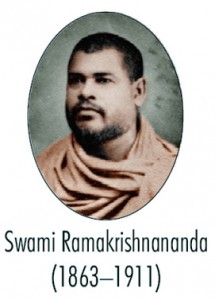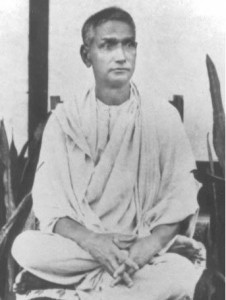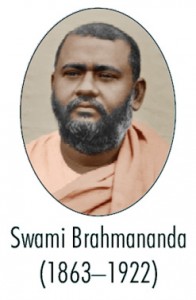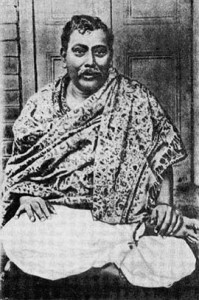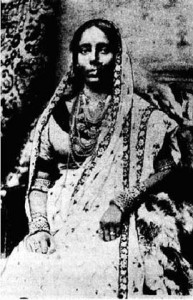Important Personalities
Important personalities connected with the Haripad Centre are :-
Kalipada Babu, Sri Sheshadri Iyer, Swami Ramakrishnananda, Swami Nirmalananda, Swami Brahmananda, Swami Sankarananda, Swami Yatishwarananda, Swami Purushottamananada and other Swamis.
These personalities are connected to the Haripad Centre in the following way :-
n 1904, Sri Kalipada Babu, a household devotee of Sri Ramakrishna invited Swami Ramakrishnananda to Trivandrum. The visit of Swami Ramakrishnananda paved the way for the formation of Bhakta Sangha in Trivandrum, Haripad and other places .
In 1911, Haripad Bhakta Sangha invited Swami Ramakrishnanda to the attend the Sri Ramakrishna Jayanti at Haripad. As he was not well he sent Swami Nirmalananda.
In 1912, on 12th September- on Sri Krishna Janmashtami, Swami Nirmalananda , laid foundation for the Ramakrishna Ashrama, Pilapuzha.
On 26th November, 1916, Rev.Swami Brahmananda reached Haripad and stayed for three days, Rev.Swami Shankarananda and Rev.Swami Yatishwarananda stayed with him.
Rev. Swami Purushottamanandaji took initiation from him and served him in Haripad. Sri Seshadri Iyer took initiation from Rev. Brahmanandaji and spoke with him in Bengali.
SWAMI RAMAKRISHNANANDA
Pre-monastic name : Shashi Bhushan Chakravarty
Date of Birth : 13 July 1863
Place of Birth : Ichapur in Hooghly district,West Bengal
Shashi’s father Ishwara Chandra Chakravarty was an expert in ritualistic worship, and Shashi imbibed from him love for ritualistic worship. After passing out of the village school, he went to Kolkata and lived with his cousin Sharat (later, Swami Saradananda) for higher education. A brilliant student, he chose mathematics for the B.A. course which, however, he could not complete owing to the terminal illness of Sri Ramakrishna at Cossipore. While studying in college Shashi and Sharat joined the Brahmo Samaj, and heard about Sri Ramakrishna from Keshab Chandra Sen himself. In October 1883 they visited Dakshineswar and were deeply attracted to Sri Ramakrishna. The Master used to say that Shashi and Sharat had been the followers of Jesus Christ in their previous birth. Shashi distinguished himself most by the self-sacrificing spirit and devotion with which he served Sri Ramakrishna during his last illness at Shyampukur and Cossipore. After the Master’s passing he joined the Baranagar Math and underwent sannyasa ordination, assuming the name Ramakrishnananda. He took charge of the worship of the Atmaramer kauta, the urn containing the relics of Sri Ramakrishna in the Math’s shrine. He felt the living presence of the Master, and so his worship was not a mere ritual but loving service to a living God. It was Swami Ramakrishnananda who formulated and introduced the system of daily ritualistic worship to Sri Ramakrishna that is followed in the Ramakrishna Movement. He seldom went out on pilgrimage, and devoted himself to daily worship at the Math. But when Swami Vivekananda, after his return from the West, asked him to go to Chennai and open a branch centre of Ramakrishna Math there, he obeyed without any hesitation. The saga of sacrifice and hardship that he underwent in preaching the message of Sri Ramakrishna and Swami Vivekananda for 14 years under unfavourable conditions has been recorded in letters of gold in the annals of the Ramakrishna Movement. In the South he travelled extensively. The starting of centres in Trivandrum, Mysore, Bangalore and Mumbai owed much to his pioneering efforts. Incessant work, however, told upon his health, and he contracted tuberculosis. He breathed his last in a state of ecstasy on 21 August 1911.
SWAMI NIRMALANANDA
Swami Nirmalananda, born as Tulasi Charan Dutta in Calcutta. Swami Nirmalananda started Haripad Centre.
SWAMI NIRMALANANDA was invited by Harippad Vedanta Socity to Kerala for the first time in 1911. The Swami reached Harippad on 16 February 1911 and the subsequent development paved the way for the establishment of the first branch centre of the Ramakrishna Mission in Kerala. The first centre, “Sri Ramakrishna Ashrama” was consecrated by Swami Nirmalananda in 1912 at Haripad. The Swami, who was lovingly known as Tulasi Maharaj opened the doors of the Ashrama shrine and its premises to the members of the public and to all devotees irrespective of their castes or religious distinctions. This Ashrama, under the instructions of Tulasi Maharaj arranged a common feast for all (Misrabhojam) at a time when untouchibility was rampant has become a milestone in history. Swami Brahmananda (1863–1922), the first President of the Ramakrishna Mission was brought to Haripad by Swami Nirmalananda and stayed there for three days. Also, it was at this Ashrama in 1924 that the first Ordination of Sannyasa ceremonies according to the Ramakrishna tradition was performed by Tulasi Maharaj thus ordaining eleven Brahmacharins (Celebate Novices) to Sannyasa(monkhood). Many stalvarts in the Ramakrishna Order of Sannyasins were trained at this Centre.
SWAMI BRAHMANANDA
Pre-monastic name :
Rakhal Chandra Ghosh
Date of Birth : 21 January 1863
Place of Birth : Sikra Kulingram,
36 miles to the N.W. of Kolkata.
Rakhal was devoted to God and used to practice meditation even in boyhood. At the age of 12 he was brought to Kolkata for his studies. There he met Narendra (later known as Swami Vivekananda) and, under his influence, joined the Brahmo Samaj. According to the custom prevalent in those days, he was married at the age of 18 to Vishweshwari. Soon after marriage Vishweshwari’s brother Manomohan Mitra, who was a close devotee of Sri Ramakrishna, took Rakhal to the Master. Prior to that Sri Ramakrishna had had a vision in which he saw the Divine Mother showing him a child who would be his son. As soon as Rakhal came to Dakshineswar, Sri Ramakrishna recognized him to be that child, and treated him like a son.
After a few visits Rakhal came to Dakshineswar to live permanently with Sri Ramakrishna. Under the Master’s guidance, he practiced intense spiritual disciplines, and attained high levels of spiritual illumination. After the Master’s mahasamadhi in 1886 when the new Monastic brotherhood was formed at Baranagar, Rakhal joined it. He underwent sannyasa ordination and assumed the name Brahmananda.
Two years later he left Baranagar Math and lived an intensely contemplative life at Varanasi, Omkarnath, Vrindaban, Hardwar and other places. During this period he scaled the highest peak of non-dualistic experience and used to remain absorbed in Samadhi for days together. In 1890 he returned to the Math. When Swami Vivekananda, after his return to India in 1897, wanted to give a new turn to monastic life, Swami Brahmananda whole-heartedly supported him. There was deep love between these two monastic brothers. After establishing Belur Math monastery when Swami Vivekananda got Ramakrishna Math registered as a Trust, Swami Brahmananda became its President. He held this post till the end of his life.
During his tenure as President, the Ramakrishna Order underwent great expansion, and several new branch centres were opened in India and abroad. The Ramakrishna Mission, which had been founded by Swami Vivekananda as an Association, was revived and registered during his time. His stress on contemplative life served to counterbalance the activities undertaken by the monks. During those difficult formative years he gave great stability to the Sangha. For his kingly qualities of administration, Swami Vivekananda gave him the appellation ‘Raja’, and since then he was respectfully referred to as ‘Raja Maharaj’ by all. He was one of the six disciples of Sri Ramakrishna whom the Master regarded as ishvarakotis.
He gave up his body, after a brief illness, on 10 April 1922. At the place where his body was cremated in Belur Math, a temple now stands in his memory.
SWAMI SANKARANANDA
Swami Shankarananda- Seventh President
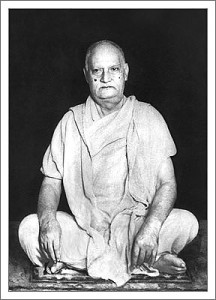
Swami Shankarananda, the seventh President of the Ramakrishna Math and Ramakrishna Mission, was born on Tuesday, 9 March 1880 at his maternal uncle’s house at Baje Pratappur in Hooghly district of West Bengal. His pre-monastic name was Amritalal Sengupta. His father Navinkrishna Sengupta was an engineer. Due to his posting at various places, Amritalal had to move about frequently, with the family. Swami Sadananda, the first monastic disciple of Swamiji, was his distantly related maternal uncle in his pre-monastic life. As a child Amritalal had a glimpse of Swami Vivekananda after his return from the West. From his childhood, Amritalal was very energetic, yet possessed a gentle disposition. His gentleness developed remarkably in his monastic life. He left home in 1902 and joined at the Belur Math. He was initiated by Swami Brahmananda who had developed great liking for the boy and fondly called him Amulya, meaning ‘precious’. Eventually, he became popular as Amulya Maharaj.
Amulya was initiated into sannyasa by Swami Brahmananda in 1906. He served his guru as his attendant. He moulded his life under the active guidance of Swami Brahmananda. Amulya’s visits to various places in India with Sister Nivedita and a visit to Japan with Swami Sadananda, helped him to gather educative experiences related to culture, religion and architecture. He was instrumental in building the monastery at Bhubaneswar, under the guidance of Swami Brahmananda. Many important temples like the temples of the Holy Mother and Swami Brahmananda were later built under his supervision. Swami Shankarananda was austere and meditative by nature and took up spiritual discipline at places like Darjeeling, Bhubaneswar, Puri and other places.
Swami Shankarananda became a Trustee of the Ramakrishna Math and a member of the Governing Body of the Ramakrishna Mission, in 1910. He served as one of the Joint Secretaries of the Order since 1929 and later became its Treasurer in 1938. For brief periods he served as the head of the Bhubaneswar Centre and also of the Delhi Centre of the Order. In 1947, he became a Vice President of the Order. After the passing away of Swami Virajananda, the mantle of the office of Presidentship fell on Swami Shankarananda on 19 June 1951. He was a man of few words and outwardly maintained a stern appearance, but had motherly love and concern for all. His tenure as the President of the Order was marked by the consolidation of the Ramakrishna Movement in various parts of the country. During the Presidentship of Swami Shankarananda many outstanding achievements took place like the establishment of the independent monastic Order for the nuns, known as the Sarada Math, and the Birth Centenary Celebration of the Holy Mother was conducted successfully. Moreover, the Seminary for the novice monks called the Probationers’ Training Centre was founded under him, at the Belur Math. On Saturday, 13 January 1962, Swami Shankarananda entered into ‘Mahasamadhi’ at the Belur Math, at the ripe age of nearly 82.
SWAMI YATISHWARANANDA
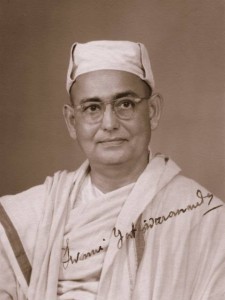
Swami Yatiswarananda (1889-1966), a senior monk and former Vice-President of the Ramakrishna Math, was a well known spiritual figure in the Neo-Vedanta movement. Besides seven years of pioneering work in spreading Vedanta in Europe and ten years of teaching Vedanta in the U.S.A.(Philadelphia[1]), he served in succession as the President of Sri Ramakrishna Ashrama in Bombay, Madras and Bangalore.Known in his premonastic life as Suresh Chandra Bhattacharya, the Swami was an initiated disciple of Swami Brahmananda (the great direct disciple of Sri Ramakrishna), and was widely respected for his high spiritual attainments, Yogic insight and mature wisdom. He advocated and lived a well-harmonized spiritual life with meditation as the keynote, and love and service as the main melody. He was a source of inspiration not only to his monastic and lay disciples, but also to a large number of other people in India and abroad, to whom he endeared himself by his selfless love and gracious manner.
SWAMI PURUSHOTTAMANANADA
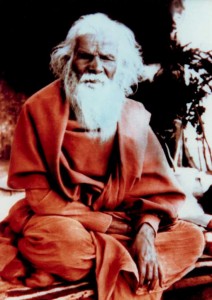
Swami Purushottamanandaji was initiated by Rakhal maharaj (Swami Brahmananda) and was given sannyasa diksha by Mahapurush maharaj.
Sri Sheshadri Iyer : Pandit in 18 Languages
P. Seshadri Iyer, a great scholar, was born in Kerala. After Passing his B.A. and M.L examinations he began his career first as a school teacher and then as a sub-registrar.
His innate love for learning different languages arose out of his desire to learn at first hand the great classics of various languages in their original. Thus, he learnt Bengal to read all the writings of Swami Vivekananda, Marathi to read Jnaneswari, Greek to read Marcus Aurelius and Epictetus.
And he learnt Russian to read Tolstoy’s War and Peace as well as French, Finnish and Polish to read masterpieces written in those languages. He had also a mastery over the different regional languages of South India. But his proficiency in Bengali-both spoken and written-was so great that he could hold a Bengali audience spell-bound by his learned discourses in that language; and the late Shri. C.Rajagopalachari chose him to translate his Mahabharata in Bengali. He also translated it in Malayalam and helped Rajaji to render it in English from the original Tamil. Indeed, Shri Seshadri was a linguist par excellence.
It was Sir. C.P.Ramaswamy Aiyar (the then Dewan of Travancore State) who recognized the innate worth of Shri Seshdri. Hearing that such a great linguist and scholar was languishing as a sub-registrar, he commissioned him to translate into Malayalam such classics as Meditations of Marcus Aurelius, Montaigne’s Essays and Plutarch’s Lives, and also for writing an original commentary on Bhagavad Gita, with the interpretations of Sankara, Ramanuja, Sri Aurobindo and Lokamanya Tilak. Sir C.P.then appointed him as the Superintendent of Travancore University’s Department of Publications.
In his later years, Shri Seshadri’s talent and scholarship were utilized by the Sahitya Akademi, New Delhi, for translating into Malayalam the great works of some Bengali, Hindi and Marathi writers as well as the History of Peloponnesian war from Greek. Shri Seshadri was a highly spiritual soul, endowed with the twin qualities of love and humility. He passed away in Bombay in August, 1989.
Kalipada Ghosh
“Can you give me some wine,” asked the man shamelessly to the Paramahamsa in the temple of Dakshineswar. It was surely a most insulting request to make to a holy man in a holy place. But strangely the Paramahamsa was not angered or displeased. His Mother Kali had sent one more player to the game. He glanced at the tall, well-built person of brown complexion, with large eyes and confident look and smiled. Here was one given to enjoy the pleasures of the world to the fullest. He replied: “Yes, I can give you some wine. But the wine I have is so intoxicating that you may not be able to bear it.” “Grand. Is it real British wine? Let me have some to wet my throat.” “No, it is not British wine. It is completely home made. If a person tastes this wine even once, all other drinks will be tasteless for ever. But not everyone can stand it. Are you ready for such a wine?” The man hesitated for a while, then replied, “Give me that wine which will make me intoxicated the whole of my life.” The Paramahamsa touched him and the man started to weep and kept on weeping in spite of attempts by others to calm him. Thus began an extraordinary relationship between Kalipada Ghosh, worldly, passionate and given to enjoyment and Sri Ramakrishna, godly, austere, and prone to ecstasy at the merest hint of divine inspiration.
He tormented his wife
Among the first words the Master said to him was, “Here is a man who has come here after tormenting his wife for twelve years.” Kalipada was startled. How did the Master know about him? He remained silent. Mere curiosity had made him accompany his friend Girish Chandra Ghosh to the temple, one afternoon late in 1884. He had begun to notice the change taking place in his friend since his encounter with a so called Paramahamsa of Dakshineswar. His normally cynical and critical friend, mutually sharing a similar zest for the ‘good things of life’, had shown an uncharacteristic eagerness to visit this holy man, and had pulled him along. Sri Ramakrishna, on the other hand, recognised with an insight born of his realisation, that the man before him was that wayward person about whom a woman had approached him for consolation some years earlier. Krishnapriyangini, the wife of Kalipada Ghosh, had one day arrived at the Dakshineswar Temple to offer prayers to Mother Kali to mend the ways of her husband. Given to bad company, drinking and other unsavoury activities, Kalipada neglected his wife and family. All her attempts to change him and make him face his responsibilities had been in vain. In desperation she had resorted to divine help. Hearing of the presence of a holy man, she went to see him after offering her prayers at the temple. She unburdened her heart to him and asked, “Can you give me a charm to rectify his ways?”
Loath to use occult power and at the same time sympathetic to her predicament, the Master said, “There is a woman who dwells in the Nahabat over there. Her power is greater than mine. Go to her and tell everything without reserve. She will give you some remedy.” The Holy Mother had just completed her worship when Krishnapriyangini entered and gave her tale of woe as well as the Master’s advice to her. Surprised at first, she understood the Master’s playful attempt, and sent back the lady to him telling her that the Master knew more. Like this poor Krishnapriyangini went from one to the other three times. Finally taking pity on her, the Holy Mother took one of the bilva leaves used for her worship, wrote the Master’s name on it and gave it to her saying, “Take this with you my child. It will fulfil your desire. Continue chanting the Lord’s name.” As she took leave of the Master he too reassured her Krishnapriyangini saying, “Don’t worry. Your husband belongs to this place.” And with faith in their words the poor lady had silently undergone her vigil these many years waiting patiently for the blessed day when her husband’s redemption would dawn. Saying nothing to the remark made by the Master at their first meeting, Kalipada joined the devotees who sat listening to his words of wisdom. In the course of his talk, the Master casually mentioned that Rakhal’s (the future Swami Brahmananda) father, a wealthy man of the world, believed that he had won three law suits because his son was protected by Ramakrishna. After the talk, Kalipada took his leave without even saluting the Master.
When he reached home surprising news awaited him. That day he was to have presented himself at court to face three law suits, but had not done so being sure of defeat. But here was news that he had won all his cases. Was it pure coincidence or did the grace of the Saint have anything to do with it? Why did he mention those cases in his talk? Kalipada felt a strange attraction for this holy man. He regretted his rude behaviour at leave taking.
Successful man of the world
Kalipada Ghosh was born in 1849 in Calcutta to a pious family devoted to Mother Kali. His father was a trader in jute, but the business was not affluent. As a boy Kalipada was full of energy with many interests, ranging from music and singing to drama and even cooking. He was a stubborn boy but was willing to submit himself to those he adored, a trait he carried into manhood. Due to the family’s poverty, his father was forced to take him out of school while in the eighth grade and find him a job as a shop assistant in the British paper firm of Messrs. John Dickinson and Company. Being uneducated his career prospects thus appeared unimpressive. But his innate intelligence, diligence and dedication soon captured the attention of his superiors and with time Kalipada rose to a high position in the Company. His importance can be gauged from the fact that the watermark of the papers printed by the Company carried his bust as an imprint.
The successful Kalipada soon made the acquaintance of Girish Chandra Ghosh and the two became quite close to each other. They had a similarity of tastes and temperaments. Kalipada began living a life devoted to satisfying his baser instincts such as drinking and debauchery, to the neglect of his wife and family. The constant endeavours of his pious wife to correct him occasionally brought about a change of heart and he resorted to religious rituals to soothe his guilty conscience. But to no avail. The pull of the senses soon overpowered his resolutions and he fell back into his old habits. Thus did his dark impulses plunge him inevitably along a path of social and spiritual ruin. But strangely his very friendship with his equally bohemian friend Girish became the instrument of his redemption. It was Girish who had first come under the spell of the Master. And it was Girish who had persuaded and taken Kalipada to the Master. So what was once looked upon by some as bad company became ultimately the cause of his salvation. Strange are the ways of providence.
Dakshineswar pulls
Since his visit Kalipada could not forget the benign countenance of Sri Ramakrishna. His heart was restless for another sight of the sage. He felt drawn by some inexplicable power back to Dakshineswar. And so one afternoon soon after the first visit we find him again arriving alone by boat at Dakshineswar. Sri Ramakrishna welcomed him as one of his own and expressed a wish to go to Calcutta. Offering to take the Master in his own boat, they boarded the boat together with the Master’s boy attendant Latu (Swami Adbhutananda) and set off for Calcutta. On the way the next scene of the Master’s Lila took place. During their journey Kalipada poured out his heart to the Master. He revealed that he was, contrary to his outer behaviour, a devotee of the Divine Mother, that he had been seeking a true teacher to whom he could surrender to but had found none until now. Then to the surprise of the Master and Latu, Kalipada, then and there in the boat knelt down and holding the Master’s feet with both hands said, “You are my Guru. Please save this sinner’s life.” Averse to being called a Guru by one and all, the Master replied, “Oh no! Chant the name of the Lord. You will get liberation.” But Kalipada did not relent. Clasping the Master’s feet more firmly he lamented, “Sir, I am a wicked man and a drunkard. My activities leave no time to chant the Lord’s name. Kindly save this ruffian who is undisciplined and unrighteous.” Going into ecstasy the Master asked him to stretch out his tongue and then wrote something on it with his finger. “Henceforth this tongue will chant the name of the Lord by itself.” A sense of peace and joy never experienced before engulfed Kalipada. Reaching Calcutta the Master blessed him further by visiting his house. The Lord, the scriptures say, is an ocean of mercy who looks not at the past life of those who surrender to Him but into their heart to see the sincerity of their motive and the intensity of their desire to change for the better and bestows His grace accordingly.
The Touch of the Philosopher’s Stone
It is said in mythology that the touch of the Philosopher’s Stone transforms base metal into pure gold. So too did the pure touch and influence of the Master. Kalipada from this meeting with the Master began to lead a more disciplined life. But well-entrenched habits die hard. On many occasions he would give in to his desires and fall back on his old ways, to his subsequent remorse and disgust at his weakness. But as often as he fell he would pick himself up and continue his march towards perfection. Many of his colleagues thought that the change that had come upon him was too good to be true. But Kalipada persevered and the Master in turn had faith in his disciple. Like Girish the Master allowed him many liberties denied to others. For the Master was no ordinary teacher giving the same lesson to all students. Far from moral admonishments, the Master, knowing the sincerity of his heart, coaxed him through encouragement to bring out his dormant positive qualities. This love of the Master which overlooked his weaknesses acted as a natural corrective whenever Kalipada’s will wavered in the face of temptation. So liberal was the Master that Kalipada himself smilingly remarked, “Ours is a grand teacher! We are not asked to practise meditation and other disciplines.” But he now felt that his mind was naturally drawn to the Master. What then is meditation if not the constant dwelling on a holy idea? His devotion and renunciation blossomed under these circumstances until the time came one day (18 October 1885) when the Master himself spoke of him to his devotees as follows, “Kalipada has given up drinking altogether.” Much later in life, Kalipada would publicly say, “Though I indulged in revelry like Jagai and Madhai, the Master blessed me as his own”, in reference to the two ruffians who became devotees of Sri Chaitanya.
Prelude to Self-Revelation
Towards the end of September 1885 Sri Ramakrishna was moved to Shyampukur in Calcutta so that he could get better treatment for his severe throat disease. However, the first residence rented for the Master was not to his liking and he left to stay at Balaram’s house. Kalipada then found a more suitable place for the Master’s stay. He took great pains to ensure that the house was as comfortable as possible by procuring the necessary household articles and even went to the extent of hanging up pictures of gods and goddesses on the walls. Here the young future monastic disciples of the Master set themselves up as his gate keepers restricting access to the Master by the public, believing that the Master’s illness was aggravated by too much talking and by the touch of impure people. Kalipada on the other hand believed that the Master’s illness was a pretext to serve some higher purpose. One day an uncommon sight met them. Here was Kalipada come to see the Master accompanied by a young European gentleman with a feminine look. The boys hesitated to stop them, for was not Kalipada a beloved disciple of the Master? Going up to Ramakrishna’s room the visitor revealed ‘himself’ to the Master as the actress Binodini. Binodini had mentally surrendered herself to the Master when he went to see Girish’s play Chaitanyalila in September 1884. The Master laughed at the enterprising trick of Kalipada and heartily blessed Binodini for her devotion to him.
It was again Kalipada who made the arrangements for the worship of the Divine Mother in the Master’s room in Shyampukur on Kali Puja day on 6 November 1885. The Master himself had given instructions for the worship. After offering the articles for worship to the Divine Mother, the Master sat still without continuing the worship. It then struck Ramchandra Dutta and Girish that the Master was giving them the opportunity to worship Him as the Divine Mother. Girish immediately offered a garland at the Master’s feet saying ‘Victory to Sri Ramakrishna’. The Master went into Samadhi and his hands assumed the divine postures of bestowing fearlessness and boons. All the devotees present including Kalipada offered flowers at his feet. This act was the first of many small incidents that led to its culmination on 1 January 1886 when the Master fully revealed himself as a divine incarnation. On 11 December 1885 the Master was moved to Cossipore Garden house as the air in the outskirts of the city was better. Here, even before the eventful Kalpataru Day of 1 January 1886, the Master’s grace towards Kalipada overflowed. It was the morning of 23 December 1885. Touching Kalipada’s chest he said, “May your inner spirit be awakened.” Then stroking his chin affectionately the Master continued, “Whoever has sincerely called on God or performed his daily religious devotions will certainly come here.”
Faith Undying
The Master left his mortal form in the early hours of 16 August 1886. Kalipada was shattered with grief. He had all along believed that the Master’s disease was a divine pretext. This was the moment for his faith to waver. He shut himself up in his room and meditated on the Master. After a few days he emerged tranquil and ready to face the world, his faith intact and strong. Swami Prabhananda surmises in his ‘First Meetings’ that he must have had some spiritual experience that had cleared his doubts. His devotion now found expression in the numerous songs he composed on Sri Ramakrishna. He continued the public celebration of the Master’s birthday (which he had helped to organise even during the Master’s lifetime) even when he was posted outside Calcutta by his employers, for example celebrating it on a grand scale in Bombay and Trivandrum. He helped the fledgling monastery at Baranagore continuing his support even after he was posted to Bombay. During their itinerant days the sannyasin disciples of the Master found a ready and joyful host in Kalipada whenever they happened to be in Bombay. On account of his generosity and courage Narendra had aptly called him ‘Dana Kali’, a name having the dual meaning generous as also demon-like in courage. Fully convinced that the Master was the door to liberation, he lent his assistance to Ramchandra Dutta to spread the Master’s name and took upon himself the management of Ramchandra’s Yogodyan Ashram in Kankurgacchi (where part of the Master’s cremated remains were kept) upon the latter’s demise. So convinced was he that the Master was behind every one of his successes that he displayed the Master’s photograph not only in his home but in all the offices of the firm he was employed in. So spiritual did he become that others marvelled at his transformation. His spiritual growth can be gauged from the following incident. One day a rogue struck him. But the stout Kalipada, who could have easily beaten him up did not retaliate, even when his friends urged him to take revenge. “Was it the ruffian who struck me? Being a servant of Ramakrishna who can beat me? It is Ramakrishna himself who hit me.”
Lead me by the hand
It was the night of 28 June 1905. Kalipada lay ill at his home in Calcutta. Swami Premananda had come from Belur Math to be at the side of this householder disciple whom the Master had called ‘his own’. Suddenly the Swami saw Kalipada’s face light up. He stretched out his hand as if to someone in front of him and breathed his last. Hearing of this incident Swami Adbhutananda remarked, “Sri Ramakrishna came for him at the moment of his death. Baburam (Swami Premananda) clearly perceived it. All the promises of the Master are being fulfilled.” Many years earlier, in the very presence of Latu, Kalipada had requested the Master thus, “When I leave the world I shall see terrible darkness all around and be filled with terror. You must lead me by the hand holding a lantern in the other. I shall always be with you then.” “All right, your wish will be fulfilled,” the Master had replied. Kalipada’s life is one more testimony to the truth that an incarnation is the physical manifestation of Divine Grace. By a touch or a word, the incarnation imparts spirituality and transforms the character of even those considered hopeless by society. Kalipada’s life story gives the assurance that there is hope for all that no one need to despair because of his past. With faith and perseverance all can surely succeed in the spiritual quest.
News & Events
-
Appeal for Donation
You can donate to us using any of these methods: Google Pay/BHIM Pay, Bank Transfer, Cheque, DD, or... -
GOOD WISHES & PRAYERS FOR GOOD HEALTH DURING CORONA VIRUS SITUATION
DEAR DEVOTEES & WELL WISHERS IT IS MORE THAN A WEEK THAT CORONA VIRUS THREAT HAS LOOMED ALL OVER ... -
HARIPAD RKMATH Flood Relief Completed
Update on 6-9-2018 Dear Friends Flood relief Activities by Ramakrishna Math Haripad have been co... -
Notebook Drive by Ramakrishna Math Haripad
PHOTOS OF POOR STUDENTS GETTING FREE NOTE BUKS. WITH YOUR KIND HELP WE HAVE SPENT RS. 1,17,000 ( ... -
FOUNDATION STONE LAYING OF SADHU NIVAS AT HARIPAD ON 2ND MAY 2018
... -
Gurupoornima Celebration on 29th July 2018
... -
The Foundation Stone laying ceremony of the MONASTIC HOSTEL ( SADHU NIVAS)Will be held ON 2nd May 2018
Details can be seen here :- Foundation Stone Laying (more…)... -
Swami Vivekananda Jayanti Celebrations on 7 Jan 2018
... -
Message on 01.01.2018 (Sri Ramakrishna Kalpataru Day)
01.01.2018 (Sri Ramakrishna Kalpataru Day) Dear devotees, well wishers and friends N... -
YOUR KIND HELP NEEDED
YOU KNOW WE ARE STRIVING HARD TO BUILD THE HARIPAD RAMAKRISHNA MATH FROM THE BASE. YOU HAVE BEEN A...
Media Resources
Recent Articles
- श्री रामकृष्ण परमहंस की जीवनी की सचित्र हिंदी डॉक्यूमेंटरी
- Talk in Tamil: Asaiyum Arugadaiyum( Desiring n Deserving)
- Chanchalam Hi Manaha Krishna Part I (Hindi)
- How to overcome crisis: Japa Yajna Blessings Swami Virabhadrananda
- Lectures by Swami Virabhadrananda
View All

